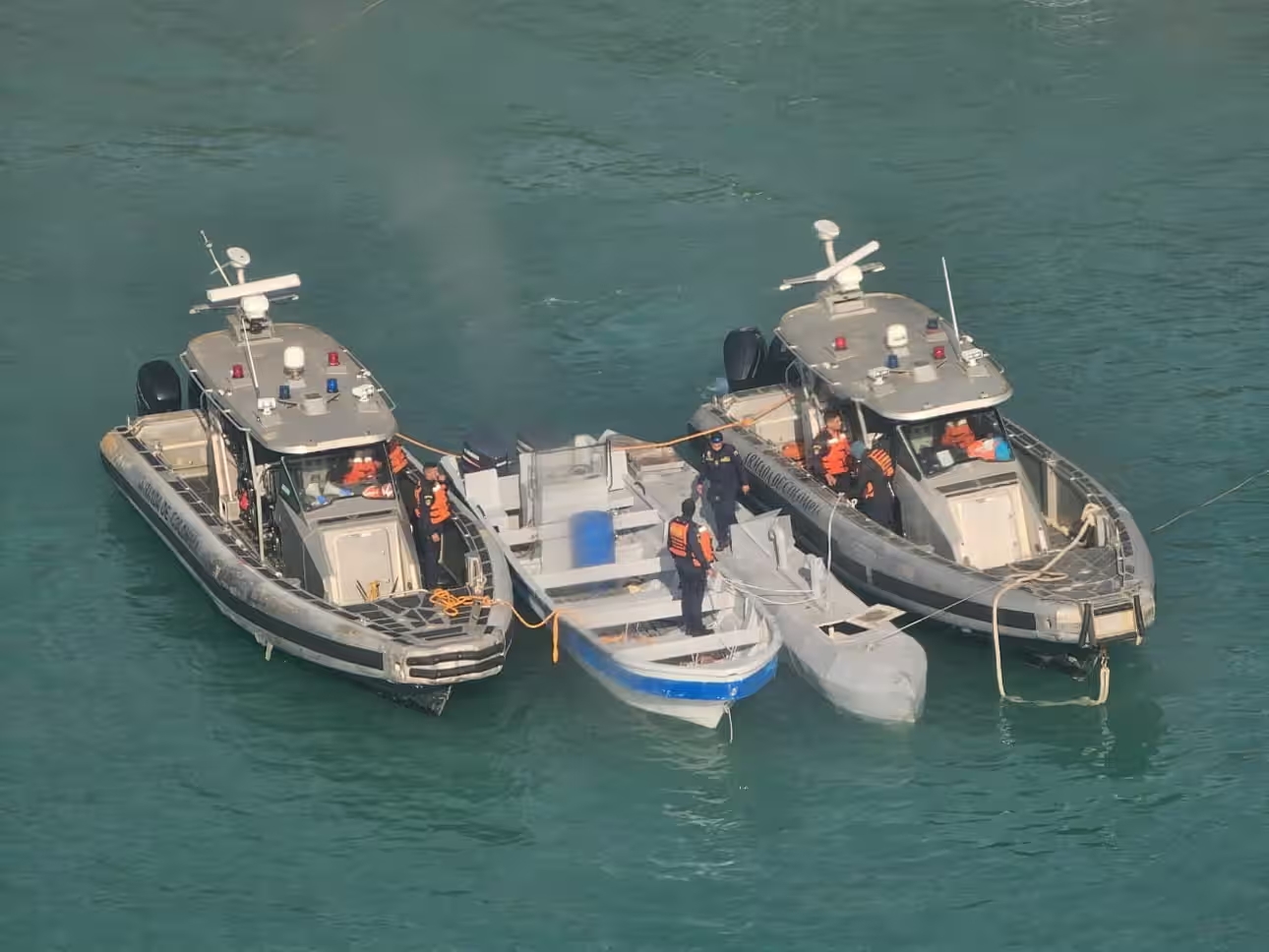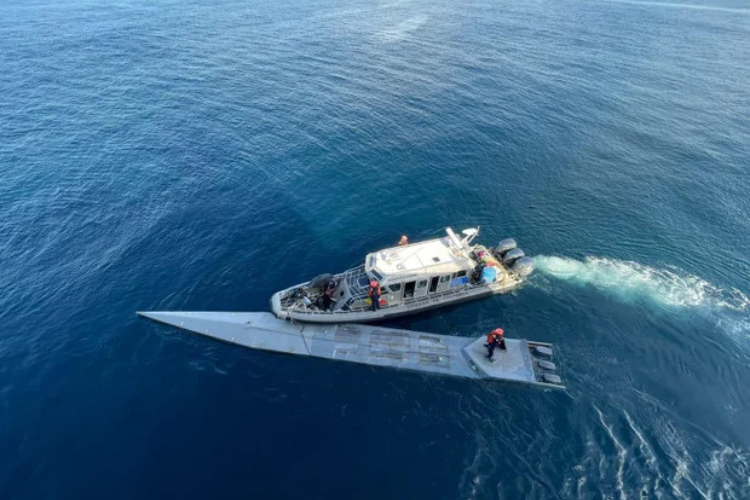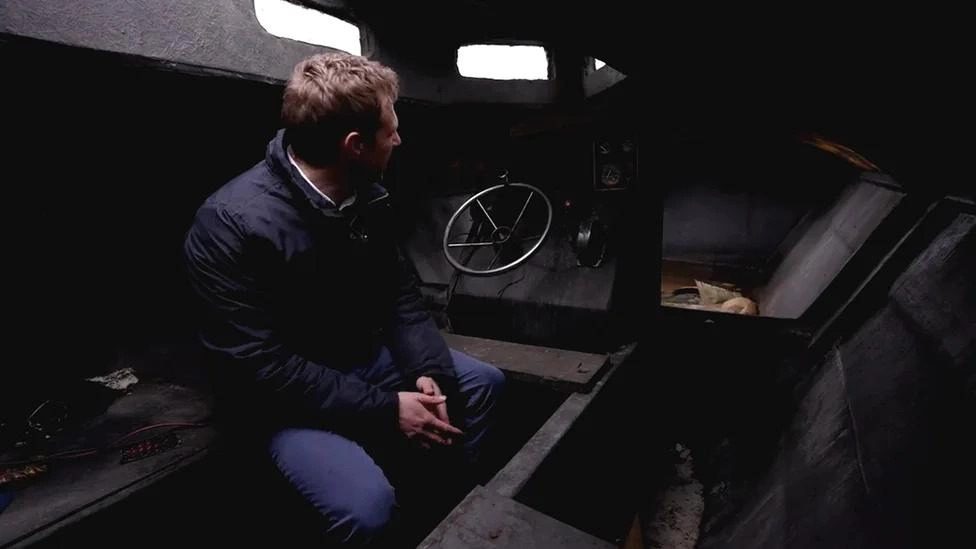Last week, the Colombian Navy seized a "self-propelled semi-submersible" capable of carrying over 1.5 tons of cocaine. While no drugs were found on board, notably, there was no crew. The small, gray vessel, discovered near Santa Marta off Colombia's Caribbean coast, was equipped with a Starlink antenna, modem, and two surveillance cameras—one in the bow and one inside. Authorities believe the vessel was undergoing testing for cocaine transport to the US or Europe.
"This discovery reflects the fact that drug traffickers are turning to more sophisticated unmanned systems to enhance their ability to evade detection," said Admiral Juan Ricardo Rozo Obregon, Commander of the Colombian Navy. "This poses a growing challenge to international maritime security."
 |
Authorities discovered the unmanned drug submarine near Santa Marta. Photo: Colombian Navy |
Authorities discovered the unmanned drug submarine near Santa Marta. Photo: Colombian Navy
The term "narco-submarine," commonly used by the public and media, refers to the semi-submersible or mini-submarine vessels employed by cartels for covert sea crossings. Semi-submersibles are designed to remain mostly submerged, with only a small portion, typically the control cabin or communication equipment, above water to minimize detection.
While cartels have used manned semi-submersibles for decades, the recent emergence of unmanned vessels signals a significant technological advancement. The Colombian Navy warns that this autonomous technology presents "an emerging threat that's changing the landscape of transnational crime." They believe the vessel seized last week belongs to the Gulf Clan, the country's largest drug trafficking organization.
Colombia is grappling with record-high drug production, largely driven by increased global demand. According to the UN, coca cultivation in the country expanded from 204,000 to 253,000 hectares in 2023. Global cocaine production also surged by nearly 34% in 2023 compared to 2022, with an estimated 25 million users, up from 17 million a decade ago.
"Narco-submarines have evolved considerably in both design and technology," noted Henry Shuldiner, an investigator at InSight Crime. "This unmanned model found in Colombia may mark a new milestone."
 |
Authorities intercepted a submarine containing three tons of drugs and two bodies in 2023. Photo: Colombian Navy |
Authorities intercepted a submarine containing three tons of drugs and two bodies in 2023. Photo: Colombian Navy
Shuldiner explained that cartels are experimenting with crewless vessels to determine their effectiveness in drug transportation. "The fact that the vessel discovered in Colombia appears to have been undergoing tests suggests cartels are willing to invest in research and development," he said. Building a semi-submersible can cost at least $150,000, though most estimates place the cost between $1 million and $2 million.
Juan Cabezas, an expert at the Institute for Development and Peace Studies (Indepaz) in Colombia, suggests that Mexican cartels operating in Colombia began hiring engineers and technology experts to build unmanned submarines as early as 2017. He warns that these unmanned vehicles make it difficult for authorities to identify the individuals behind the shipments.
Colombian law penalizes the operation, construction, and possession of semi-submersibles with up to 14 years in prison. However, the number of vessels detected in the Atlantic and Pacific in 2024 remained near record levels.
"In some years, InSight Crime has documented 30 interceptions of semi-submersibles globally, and those are just the ones detected," said Shuldiner. "Some US officials estimate this number represents only about 5% of the actual total. While authorities intercepted a record number of vessels in 2024, most shipments still get through successfully."
 |
A reporter inside the cabin of a drug-smuggling submarine seized en route to Spain. Photo: BBC |
A reporter inside the cabin of a drug-smuggling submarine seized en route to Spain. Photo: BBC
Shuldiner added that while most cocaine is transported on container ships, narco-submarines are playing an increasingly significant role, especially for long sea routes. In the first half of 2025, the Colombian Navy detected 10 semi-submersibles, all modified for low radar detectability and some capable of a degree of automated movement.
Sergio Guzman, director of Colombia Risk Analysis, believes authorities are "one step behind the criminals." He warns that Colombia and other governments will "struggle to keep up" unless they improve cooperation and information sharing.
Duc Trung (Guardian, InSight Crime, Reuters)












